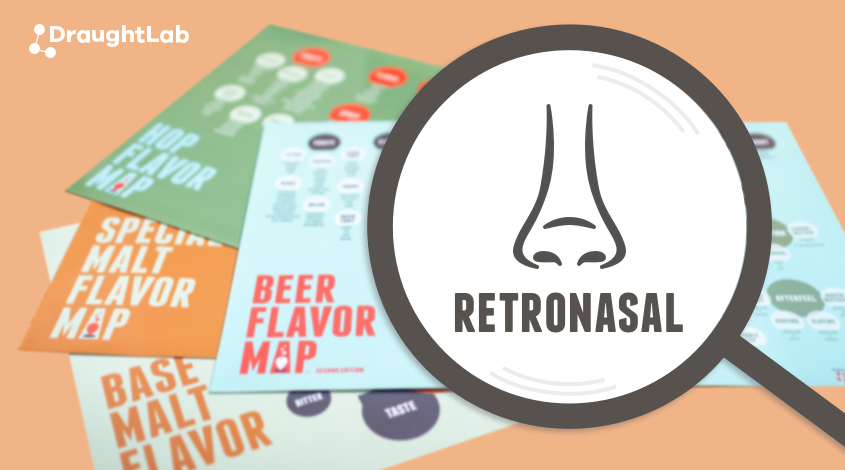
We often get asked why there are so many descriptors for aroma but only five for taste. After all, it’s common for a person to say, “this tastes like lemon.” So, what’s up with that? Shouldn’t lemon be listed as a taste, or even shown in both categories?
Well, the short answer is that with sensory, we line up flavor terms with how the body perceives them. Taste refers to what your tongue/tastebuds detect, which is limited to the basic tastes of sweet, salty, sour, bitter, umami, and fatty. So where does something like lemon fit in… let’s talk Retronasal Olfaction!
Definition
Let’s get the word olfaction out of the way, which just means sense of smell. That’s right, the lemon we’re talking about is actually something that you’re smelling, but maybe not in the way that you’re thinking.
Sense of smell is experienced in 2 ways – IN through the nose (sniffing or orthonasal), and OUT through the nose which is referred to as Retronasal Olfaction.
The common misconception is that your nose only detects flavors orthonasally, mostly because the tastebuds get so much credit for what’s going on in the mouth. Well, it’s not like your nose turns off when you’re eating. In fact, the process of breaking down food in your mouth releases a whole new set of aromas that you experience as you breathe out. This is where more nuanced flavors appear.
How Does it Work?
So, you sit down at taste panel and are given a jellybean. You smell it and there really isn’t much to note, so you take a bite and start chewing. This is what’s happening:
- Chewing and Swallowing Releases Flavor Compounds: As you chew and warm food, flavor compounds are released and trapped in your mouth, becoming more concentrated.
- Exhaling Moves Compounds: When you exhale, these concentrated compounds hitch a ride through the passage connecting your mouth and nose and then head straight to the smell center.
- Compounds Attach to Receptors: Compounds meet up with specialized tissue at the olfactory center and send a signal to the brain.
Suddenly, you detect cotton candy and berry flavors that weren’t there before. Retronasal in action!
Still Don’t Believe Us?
Ever notice how food tastes bland when you’re sick? Well, it’s likely that your nose is blocked, and the flavor compounds can't travel past the olfactory center. You won’t be able to experience any of that chicken noodle soup until you blow your nose and clear the airway.
STILL Not Sure?
You can test it out yourself. Cut a lemon wedge, pinch your nose so that air can’t pass, and take a bite.
It should taste very sour, but with no lemon because you’ve blocked the aroma receptors in your nose (but your tastebuds still work just fine).
Now… with your mouth still closed, un-pinch and slowly exhale. What do you get?
“This tastes like lemon.”
DraughtLab offers practical and approachable Sensory Analysis Solutions that deliver real-world value to food and beverage companies. Visit our website or reach out to us at info@draughtlab.com to learn more!